Black rhinos also going by the scientific name Diceros bicornis, are herbivores and browsers who consume trees and shrubs for the majority of their food. They take leaves and fruit from the trees using their mouths. White rhinos munch on grass, their massive heads and squared lips dropped to the earth.
Both black and white rhinoceroses are gray in color. They differ not in color but in the contour of their lips. The white rhino has a squared top lip, whereas the black rhino has a pointy upper lip. The variance in lip form is due to the diets of the animals.
In the expansive landscapes of Africa, the Black Rhinoceros (Diceros bicornis) roams with an aura of power and grace. This magnificent creature, known for its prehistoric appearance and imposing horn, is a symbol of both the beauty and the challenges faced by the world’s endangered species. Let us take a keen look into the world of the Black Rhinoceros, exploring its physical characteristics, ecological significance, conservation efforts, and the urgent need for action to protect this iconic species from extinction.
Black Rhinoceros: Species Profile
COMMON NAME: Black Rhinoceros
SWAHILI NAME: Kifaru Mweusi
SCIENTIFIC NAME: Diceros bicornis
TYPE: Mammal
FOOD: Black Rhinoceroses are herbivores, primarily feeding on a variety of plants. They are browsers, meaning they feed on leaves, branches, shoots, and fruits of various shrubs, trees, and bushes. Their diet consists of a wide range of vegetation, including woody plants, herbs, and grasses.
HABITAT: Black Rhinoceroses inhabit a range of habitats, including savannahs, grasslands, and dense forests. They are native to several countries in Africa, particularly in eastern and southern regions. They prefer areas with access to water sources, such as rivers, lakes, and waterholes.
SIZE: Black Rhinoceroses are large and robust animals. They can reach a length of up to 3.5 to 4.5 meters (11 to 15 feet) and a shoulder height of around 1.4 to 1.8 meters (4.6 to 5.9 feet). Adult males are typically larger and heavier than females.
AVERAGE LIFE SPAN IN THE NATURAL HABITAT: In the wild, Black Rhinoceroses have an average lifespan of around 35 to 50 years. However, due to various threats, including poaching and habitat loss, their population has significantly declined in recent years.
ACTIVE: Black Rhinoceroses are primarily active during the cooler hours of the day, especially early morning and late afternoon. They are known to be more solitary compared to other rhinoceros species, with males being particularly territorial. They have a keen sense of smell and hearing, aiding in their detection of potential threats.
GESTATION PERIOD: The gestation period of a Black Rhinoceros is approximately 15 to 16 months. Female rhinoceroses give birth to a single calf, which remains under the care of the mother. The calf stays with its mother for a few years until it becomes independent.
WEIGHT: Adult Black Rhinoceroses can weigh between 800 to 1,400 kilograms (1,800 to 3,100 pounds). Males are generally larger and heavier than females. They have a solid build with a thick skin that provides protection against predators and environmental hazards.
SIZE COMPARISON TO A 6-FT MAN: Black Rhinoceroses are significantly larger than a 6-ft man. With a shoulder height of around 1.4 to 1.8 meters (4.6 to 5.9 feet), they stand much taller and have a bulkier body compared to an average human. Their impressive size and distinctive horn make them one of the most iconic and recognizable animals in Africa.
Physical Features:
The Black Rhinoceros (Diceros bicornis), also known as the hook-lipped rhinoceros, is a magnificent and distinctive creature native to Africa. Its appearance is characterized by several notable features that distinguish it from other rhinoceros species. Let’s delve into the appearance of the Black Rhinoceros:
- Size and Body Shape: Black Rhinos are the smaller of the two African rhinoceros species, with adults weighing between 800 and 1,400 kilograms (1,760 to 3,080 pounds). They typically stand about 1.4 to 1.8 meters (4.6 to 5.9 feet) tall at the shoulder. Despite their size, they possess a compact and muscular body with a barrel-shaped torso, designed for power and agility.
- Distinctive Horns: The Black Rhinoceros is renowned for its two prominent horns, which are made of keratin, the same material as human hair and nails. The front horn is typically longer and can reach lengths of up to 140 centimeters (55 inches). The rear horn is shorter and often less developed. These horns are used for defense, territorial disputes, and occasionally for digging.
- Head and Facial Features: The Black Rhinoceros has a distinctive, prehensile upper lip that forms a hooked shape, which is where its name “hook-lipped rhinoceros” originates. This specialized lip allows for selective feeding on certain plant species. Above the upper lip, the rhino has a pair of sharp, triangular ears that can swivel independently, aiding in detecting sounds and potential threats.
- Skin Color and Texture: The skin of the Black Rhinoceros is thick and formed by multiple layers, providing protection against external elements. It is predominantly gray in color, but can range from brown to dark gray. The skin is often deeply wrinkled, especially around the neck, shoulders, and legs, giving the rhino a rugged and textured appearance.
- Lack of Hair: Unlike some other mammals, Black Rhinos have minimal hair covering their bodies. They lack the dense coat of hair that is characteristic of their counterpart, the White Rhinoceros. This absence of hair contributes to their distinct appearance, showcasing the rugged texture and coloration of their skin.
It is worth noting that the appearance of individual Black Rhinoceroses can vary slightly, influenced by factors such as age, sex, and geographical location. Additionally, each rhino possesses unique horn shapes, adding to their individuality and making them easily identifiable to experienced trackers and conservationists.
The awe-inspiring appearance of the Black Rhinoceros is a testament to its strength and adaptation to its environment. However, it is important to remember that these remarkable creatures are highly endangered, with their populations under threat from poaching and habitat loss. Efforts are being made to protect and conserve these magnificent animals, ensuring their continued presence in the wild for generations to come.
A. Majestic Appearance:
The Black Rhinoceros is an impressive sight, with its massive size, thick skin, and a large horn on its snout. These herbivores have a distinctive prehistoric appearance, resembling the ancient giants that once roamed the Earth.
B. Double-horned Wonder:
One of the defining features of the Black Rhinoceros is its two horns, with the front horn typically being longer than the rear one. These formidable horns are made of keratin, the same material found in human hair and nails, and are used for defense, territorial disputes, and even foraging.
Habitat and Range:
A. African Savannas and Woodlands:
The Black Rhinoceros is native to various habitats, including savannas, grasslands, and dense woodlands across several countries in Africa. These adaptable creatures can survive in both arid and more humid environments, showcasing their resilience and ability to cope with changing conditions.
B. Limited Range:
Tragically, the Black Rhinoceros’s range has significantly diminished due to habitat loss and poaching. Their once vast territories have shrunk, leaving them vulnerable and isolated in smaller pockets of protected areas.
Behaviour
The Black Rhinoceros (Diceros bicornis) is a fascinating and elusive creature known for its unique behavior and adaptations. Understanding the behavior of these magnificent animals can provide valuable insights into their ecology and aid in their conservation efforts. Here are some key aspects of Black Rhinoceros behavior:
- Solitary Nature: Black Rhinos are primarily solitary animals, with adult individuals usually preferring a solitary lifestyle. They establish and defend territories, marking them with urine, feces, and scent glands. These territories can vary in size depending on the availability of resources and the individual’s gender and age. Solitary behavior helps reduce competition for limited resources and allows for more efficient foraging.
- Nocturnal Habits: Black Rhinos are predominantly nocturnal, meaning they are most active during the night. They have evolved to navigate and forage in low light conditions, relying on their acute senses of smell and hearing. By being active at night, they can avoid the intense heat of the day and reduce the risk of encounters with potential predators.
- Selective Herbivores: Black Rhinos are browsers, feeding on a wide variety of plant species. They have a specialized lip that allows them to grasp and pluck leaves and twigs from bushes and trees. Despite their size, they are highly selective in their feeding habits, showing preferences for specific plant species. This selective browsing behavior contributes to the dispersion of seeds and the shaping of vegetation communities.
- Aggressive Defense: When threatened, Black Rhinos can exhibit aggressive behavior. They have a reputation for being more aggressive than their White Rhino counterparts. When confronted, they may lower their heads, display their horns, and make mock charges to intimidate potential threats. If provoked or cornered, they can use their sharp horns and considerable strength to defend themselves.
- Mud-Wallowing and Dust-Bathing: Like other rhinoceros species, Black Rhinos engage in mud-wallowing and dust-bathing behaviors. They roll in mud or dust, coating their bodies with a protective layer that helps regulate body temperature, repel parasites, and keep their skin hydrated. These behaviors also serve as social interactions, as different individuals may share the same mud wallows or dust-bathing sites.
- Limited Vocalizations: Black Rhinos are generally silent animals. They communicate through visual cues, body language, and scent markings rather than vocalizations. However, they can produce a variety of sounds when distressed, including snorting, grunting, and snorting.
- Maternal Care: Female Black Rhinos are responsible for the care and protection of their calves. They form a bond with their offspring, providing nourishment and guidance until the calf becomes independent. Calves stay close to their mothers for a couple of years, learning essential skills for survival in the wild.
Understanding the behavior of Black Rhinos is crucial for their conservation and management. Efforts to protect their habitats, combat poaching, and promote sustainable land-use practices play a vital role in preserving these magnificent animals and ensuring their continued survival in the wild.
Ecological Importance:
A. Keystone Species:
The Black Rhinoceros plays a critical role in shaping the ecosystems in which it resides. As a selective browser, it helps maintain the balance of vegetation by controlling the growth of certain plant species and creating niches for other animals.
B. Seed Dispersal:
Through their feeding habits, Black Rhinoceroses aid in seed dispersal, allowing for the regeneration and diversity of plant life. Their movements across the landscape help sustain the delicate interplay between plants and animals.
Conservation Efforts:
A. Alarming Decline:
The Black Rhinoceros population has experienced a drastic decline over the past century due to rampant poaching driven by the illegal wildlife trade. Their horns are highly sought after for their perceived medicinal value and as status symbols, fueling the demand for these magnificent creatures.
B. Conservation Measures:
To combat the imminent threat of extinction, concerted conservation efforts have been implemented. These include the establishment of protected areas, anti-poaching initiatives, community engagement, and international collaborations aimed at raising awareness and strengthening legislation to protect the species.
The Road Ahead:
A. Hope for Survival:
While the Black Rhinoceros remains critically endangered, there is hope for its survival. Conservation organizations, governments, local communities, and passionate individuals are working tirelessly to protect and restore habitats, monitor populations, and combat the illegal wildlife trade.
B. The Role of Education:
Educating the public about the importance of rhino conservation and the devastating consequences of poaching is paramount. By raising awareness, fostering empathy, and encouraging responsible tourism practices, we can contribute to the preservation of these majestic creatures and their habitats.
Diceros bicornis
The Diceros bicornis (Black Rhinoceros) stands as a testament to the resilience and beauty of Earth’s biodiversity. As we witness the alarming decline of this iconic species, we must unite in our commitment to protect and restore their habitats, combat illegal wildlife trade, and advocate for stronger conservation measures. The survival of the Black Rhinoceros depends on our collective efforts, ensuring that future generations will continue to marvel at the grandeur of these ancient giants.
Black Rhinoceros Adaptations
The Black Rhinoceros (Diceros bicornis) is a remarkable creature that has evolved various adaptations to survive in its natural habitat. These adaptations have allowed them to thrive in diverse ecosystems and cope with the challenges they encounter. Let’s explore some of the key adaptations of the Black Rhinoceros:
- Distinctive Horns: One of the most notable adaptations of the Black Rhinoceros is its two large horns, which are made of keratin, the same material as human hair and nails. The front horn tends to be longer, reaching lengths of up to 140 centimeters (55 inches), while the rear horn is usually smaller. These horns serve multiple purposes, including defense against predators, establishing dominance during territorial disputes, and aiding in foraging by breaking branches and digging.
- Selective Feeding Mechanism: Black Rhinos have evolved a unique feeding adaptation with their prehensile upper lip. This specialized lip allows them to selectively browse on preferred plant species. They can grasp and pluck leaves and twigs from bushes and trees with precision, enabling them to access nutritious vegetation while avoiding thorns and other less desirable plant parts.
- Specialized Teeth: The teeth of Black Rhinos are adapted for their browsing diet. They have sharp and pointed front incisors that help them nip off branches and foliage. Behind the incisors, they possess large and flat molars with ridged surfaces that aid in grinding and processing tough plant material. This dental adaptation enables them to efficiently extract nutrients from fibrous vegetation.
- Thick Skin: The Black Rhinoceros has thick and rugged skin, providing protection against thorny bushes, insect bites, and minor injuries. Their skin consists of multiple layers that help regulate body temperature and retain moisture. The folds and creases in their skin also contribute to their unique appearance and texture.
- Excellent Sense of Smell and Hearing: Black Rhinos have a highly developed sense of smell and hearing. Their keen sense of smell allows them to detect potential threats, locate food sources, and communicate through scent markings. Their acute hearing helps them detect subtle sounds in their environment, enabling them to be more alert and responsive to their surroundings.
- Agile and Fast Runners: Despite their large size, Black Rhinos are agile and can reach impressive speeds when needed. They have adapted to navigate through different types of terrain, including dense vegetation and uneven landscapes. When threatened, they can run at speeds of up to 50 kilometers per hour (31 miles per hour), allowing them to escape from predators or dangerous situations.
- Mud-Wallowing and Dust-Bathing: Black Rhinos engage in mud-wallowing and dust-bathing behaviors, which serve various purposes. By wallowing in mud or dust and coating their bodies, they create a protective layer that helps regulate body temperature, prevent sunburn, repel parasites, and keep their skin hydrated. These activities also contribute to social interactions and territory marking.
These adaptations have allowed the Black Rhinoceros to survive and thrive in diverse habitats, ranging from savannas to dense forests. However, despite their remarkable adaptations, Black Rhinos face significant conservation challenges due to poaching and habitat loss. Efforts to protect and conserve these magnificent creatures are essential to ensure their continued existence for future generations.
Best Places to See Black Rhinoceros in Tanzania
Tanzania is a country blessed with abundant wildlife and diverse ecosystems, making it an ideal destination for wildlife enthusiasts and safari adventurers. While the Black Rhinoceros (Diceros bicornis) is a critically endangered species, there are still a few locations within Tanzania where fortunate visitors may have the opportunity to spot these magnificent creatures. Here are some of the best places to see Black Rhinos in Tanzania:
- Ngorongoro Crater Conservation Area: The Ngorongoro Crater, a UNESCO World Heritage Site, is a haven for wildlife, including a small population of Black Rhinos. The crater’s enclosed ecosystem provides a protected habitat for various species, and lucky visitors may catch a glimpse of these elusive creatures while exploring the crater’s grasslands and acacia woodlands.
- Serengeti National Park: Known for its iconic wildebeest migration and abundant wildlife, Serengeti National Park is another potential location to encounter Black Rhinos. While the population of Black Rhinos in this park is limited, conservation efforts have been successful in reintroducing and protecting them in specific areas. Safari drives in the Serengeti may offer the chance to spot these rare and remarkable creatures.
- Mkomazi National Park: Located in northeastern Tanzania, Mkomazi National Park is a lesser-known gem that hosts a significant population of Black Rhinos. The park’s rugged terrain and acacia savannah provide a suitable habitat for these animals. Exploring Mkomazi on guided game drives or walking safaris may increase your chances of sighting Black Rhinos in their natural environment.
- Selous Game Reserve: As one of the largest protected areas in Africa, Selous Game Reserve offers a vast and relatively untouched wilderness. Although Black Rhinos are extremely rare in this region, efforts have been made to reintroduce them, and the reserve serves as an essential stronghold for their conservation. Visitors to Selous may be fortunate enough to witness the gradual recovery of the Black Rhino population.
- Grumeti Game Reserve: Located adjacent to the western corridor of Serengeti National Park, Grumeti Game Reserve is a private reserve that encompasses a range of habitats. Conservation initiatives in this area have led to the successful reintroduction of Black Rhinos, offering a chance to observe these majestic creatures in a more exclusive setting.
It is important to note that the sightings of Black Rhinos are not guaranteed, as their populations are critically endangered, and their numbers are limited. Their conservation status necessitates responsible tourism practices and adherence to wildlife viewing guidelines to minimize disturbance to these animals and their habitats. Hiring experienced guides and joining reputable safari operators will not only increase the chances of spotting Black Rhinos but also contribute to their conservation efforts.
Witnessing a Black Rhinoceros in the wild is a rare and unforgettable experience. The opportunity to see these incredible creatures in their natural habitat is a testament to the ongoing conservation efforts in Tanzania and serves as a reminder of the importance of preserving these magnificent species for future generations.
Black Rhinoceros Safari Tips
Embarking on a safari to observe the majestic Black Rhinoceros (Diceros bicornis) is an exciting and unforgettable adventure. These critically endangered creatures require careful observation and responsible tourism practices to ensure their safety and well-being. If you’re planning a Black Rhinoceros safari, here are some essential tips to enhance your experience:
- Choose the Right Safari Destination: Research and select a safari destination known for its Black Rhinoceros populations. Tanzania, for example, offers several national parks and reserves where Black Rhinos can be spotted, such as the Ngorongoro Crater, Serengeti National Park, Mkomazi National Park, Selous Game Reserve, and Grumeti Game Reserve. Consult with experienced safari operators who have knowledge of these areas and their wildlife.
- Opt for Experienced Guides: Black Rhinoceros safaris require skilled and knowledgeable guides who understand the behavior, habitat, and conservation aspects of these remarkable creatures. Choose a safari company or guide who has experience in tracking and locating Black Rhinos. Their expertise will greatly enhance your chances of encountering these elusive animals while ensuring minimal disturbance.
- Follow Wildlife Viewing Guidelines: Always prioritize the well-being of the Black Rhinos and other wildlife during your safari. Respect the guidelines provided by your guides or park authorities, which may include maintaining a safe distance, avoiding sudden movements or loud noises, and refraining from feeding or touching the animals. These guidelines are in place to protect both you and the wildlife.
- Practice Patience: Spotting Black Rhinos in the wild can be a challenging task due to their dwindling populations and elusive nature. Be prepared to spend ample time observing and waiting patiently. Remember that wildlife encounters are not guaranteed, but the thrill of finally spotting a Black Rhino makes the experience all the more rewarding.
- Use Binoculars and Photography Equipment: Black Rhinos may often be observed from a distance, making binoculars an essential tool for closer observation. Bring a pair of high-quality binoculars to enhance your wildlife viewing experience. If you’re interested in photography, ensure you have the appropriate equipment, including telephoto lenses, to capture stunning images while maintaining a respectful distance.
- Respect Conservation Efforts: Black Rhinoceros populations are critically endangered, and their conservation is of utmost importance. Support conservation initiatives and organizations dedicated to protecting these magnificent creatures. By choosing eco-friendly safari operators and contributing to conservation efforts, you actively participate in safeguarding their future.
- Educate Yourself: Learn about the biology, behavior, and conservation challenges facing Black Rhinos before your safari. Understanding their ecological role and the threats they face enhances your appreciation and empathy for these animals. Educate yourself about responsible wildlife tourism practices, and share your knowledge with fellow travelers to promote awareness.
Encountering a Black Rhinoceros in its natural habitat is a privilege. By following these safari tips and practicing responsible tourism, you can contribute to the conservation of these endangered creatures while creating lifelong memories of an extraordinary wildlife experience.
Black Rhinoceros Frequently Asked Questions
The Black Rhinoceros (Diceros bicornis) is a captivating and endangered species that often raises questions among wildlife enthusiasts and conservationists. To help shed light on these magnificent creatures, here are some frequently asked questions about Black Rhinos along with their answers:
Q: Why are Black Rhinoceros called “Black” Rhinos?
A: Despite their name, Black Rhinoceros are not actually black in color. The term “black” originates from the Afrikaans word “swart,” which means “wide” and refers to the animal’s wide upper lip. This distinguishing feature helps them selectively browse on preferred plant species.
Q: How many subspecies of Black Rhinoceros exist?
A: Historically, there were numerous subspecies of Black Rhinoceros spread across Africa. However, due to extensive hunting and habitat loss, several subspecies have become extinct. Currently, three subspecies are recognized: the South-central Black Rhinoceros, the South-western Black Rhinoceros, and the East African Black Rhinoceros.
Q: What is the main threat to Black Rhinoceros populations?
A: The primary threat to Black Rhinoceros populations is poaching for their horns. The demand for rhino horn, fueled by misconceptions about its medicinal properties and its use in traditional medicine, drives illegal hunting. Habitat loss and fragmentation also contribute to their declining numbers.
Q: Are Black Rhinos aggressive and dangerous to humans?
A: Black Rhinos are generally not aggressive toward humans unless they feel threatened or cornered. They have a reputation for being more aggressive than their White Rhino counterparts. However, like all wild animals, it’s important to maintain a safe distance and respect their space to avoid any potential conflicts.
Q: How fast can a Black Rhinoceros run?
A: Black Rhinos are surprisingly fast runners despite their large size. They can reach speeds of up to 50 kilometers per hour (31 miles per hour) when necessary, enabling them to evade potential predators or dangerous situations.
Q: What is the conservation status of Black Rhinoceros?
A: Black Rhinoceros are listed as critically endangered by the International Union for Conservation of Nature (IUCN). The species has experienced a drastic population decline primarily due to poaching. Conservation efforts are underway to protect and restore their habitats, combat illegal wildlife trade, and increase anti-poaching measures.
Q: Do Black Rhinos have any natural predators?
A: Adult Black Rhinos have few natural predators due to their large size and formidable horns. However, young or injured individuals may fall prey to lions, hyenas, and occasionally crocodiles in certain habitats. The biggest threat to their survival today is human activity rather than predation.
Q: How long do Black Rhinos live?
A: Black Rhinoceros have an average lifespan of 35 to 50 years in the wild. Their longevity can vary based on various factors, including habitat conditions, predation risks, and overall health.
Q: What is being done to protect and conserve Black Rhinoceros?
A: Numerous conservation organizations, governments, and local communities are actively involved in protecting and conserving Black Rhinoceros. Conservation efforts include anti-poaching patrols, habitat restoration, community engagement, captive breeding programs, and raising awareness about the importance of preserving these magnificent creatures.
Understanding the challenges and significance of Black Rhinoceros conservation is crucial to safeguarding their future. By spreading awareness, supporting conservation initiatives, and promoting responsible wildlife tourism, we can contribute to the ongoing efforts to protect these extraordinary animals for generations to come.

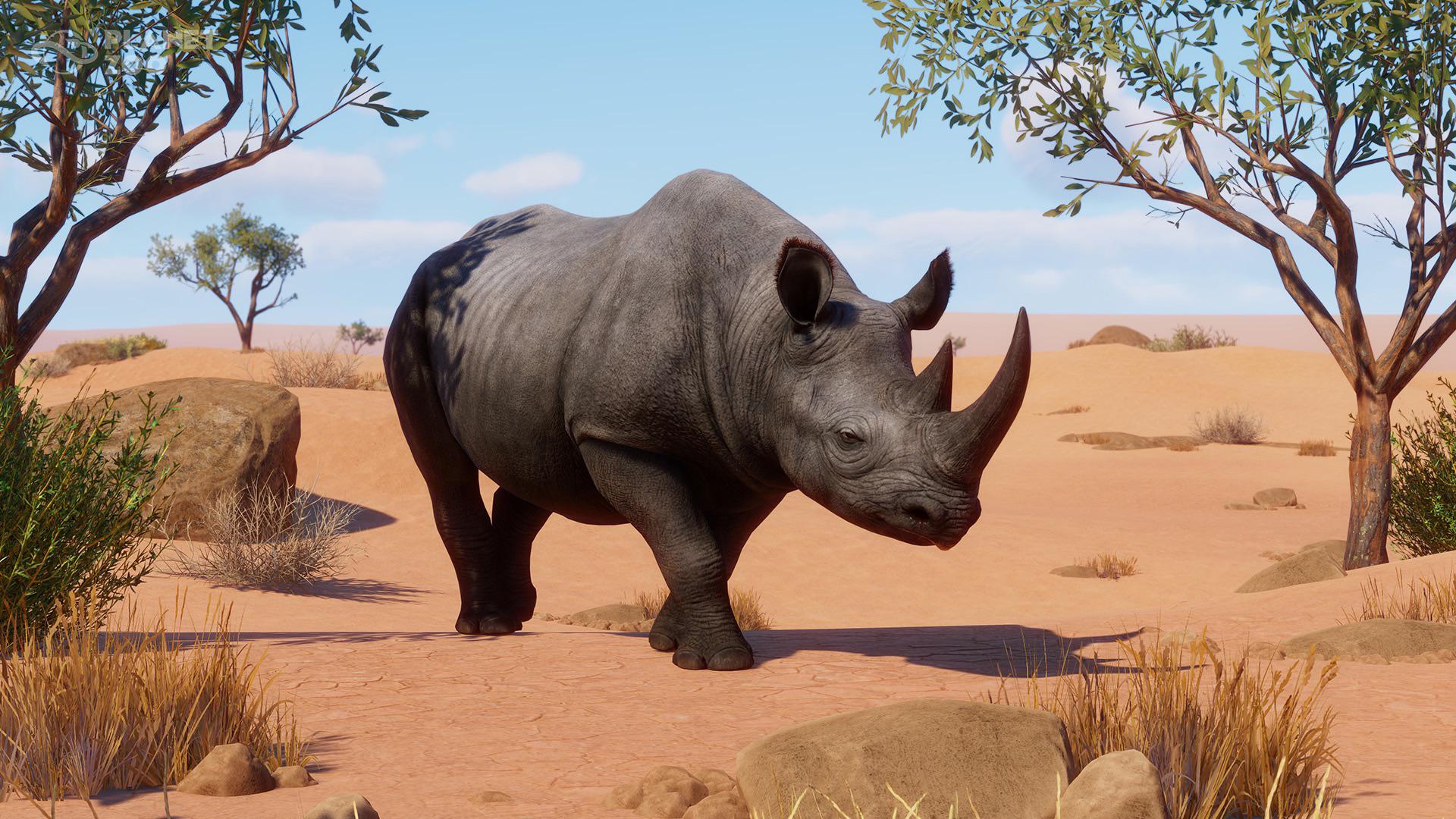
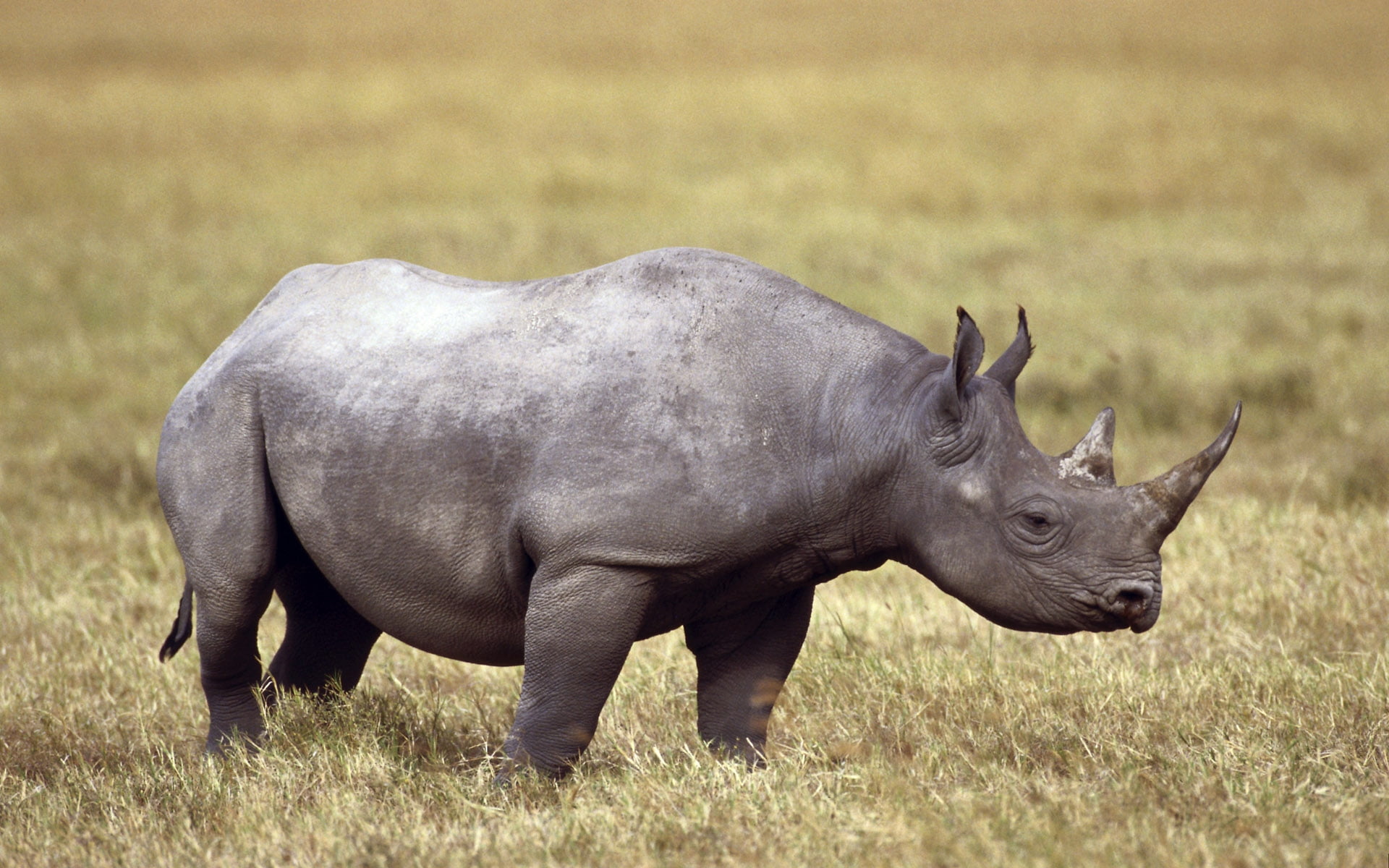
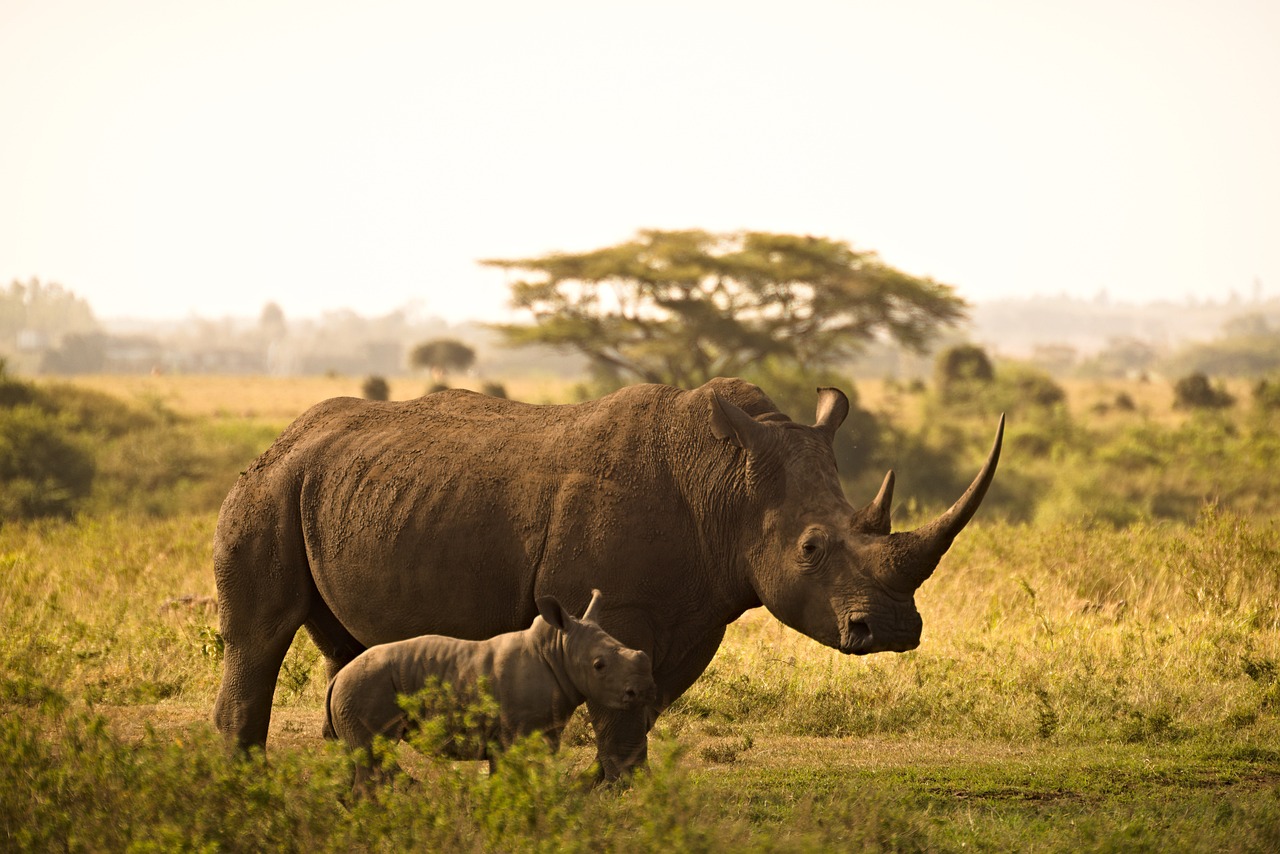
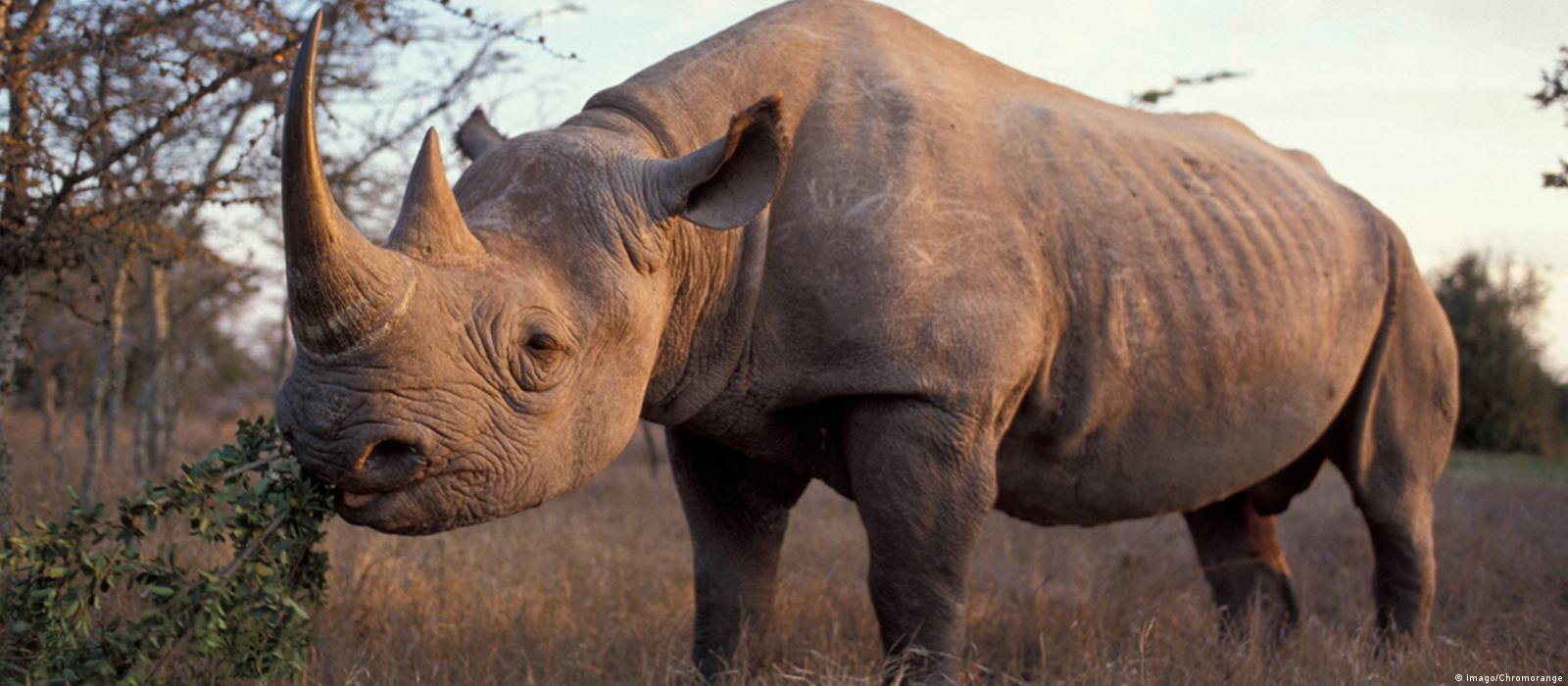
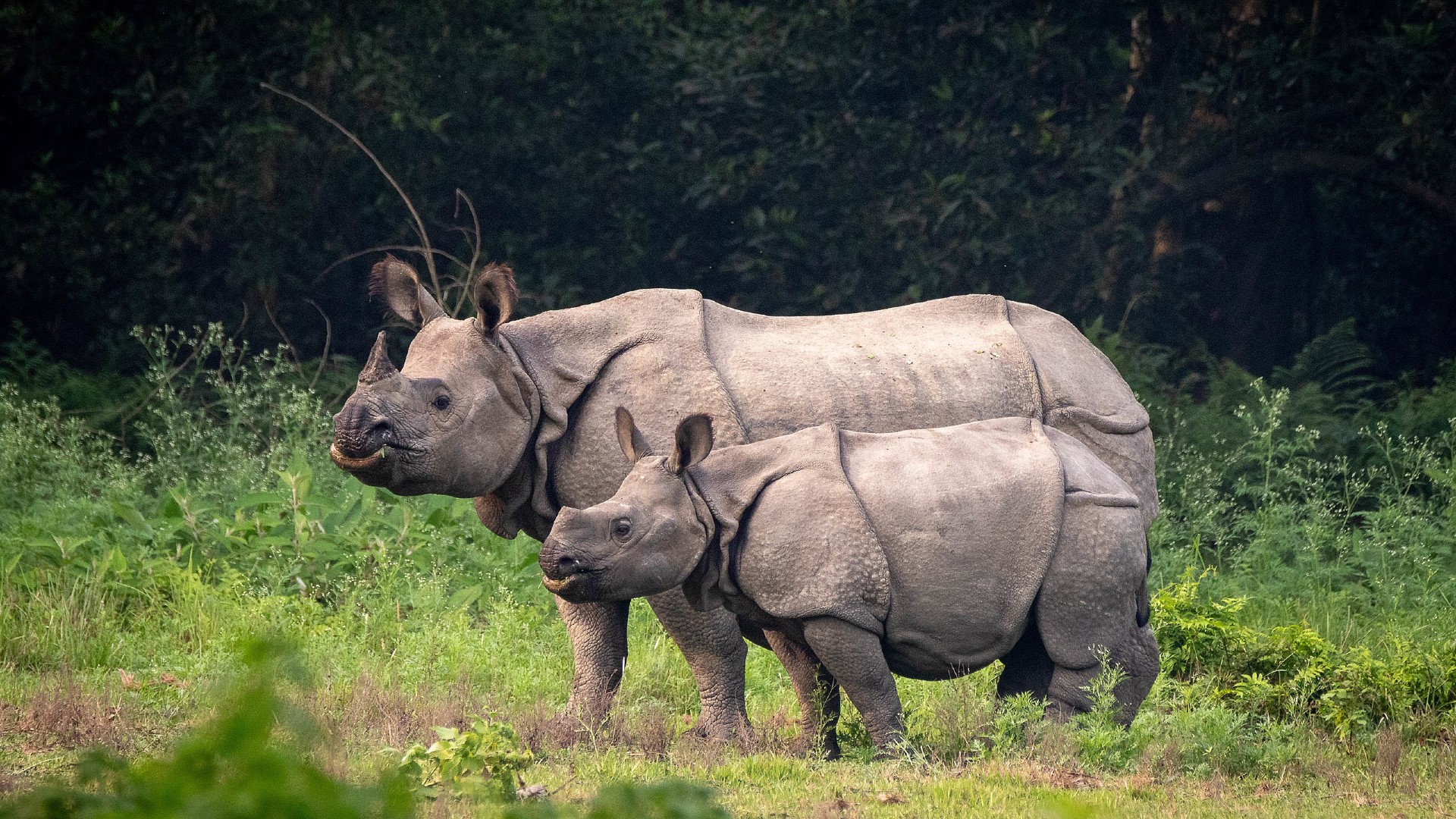
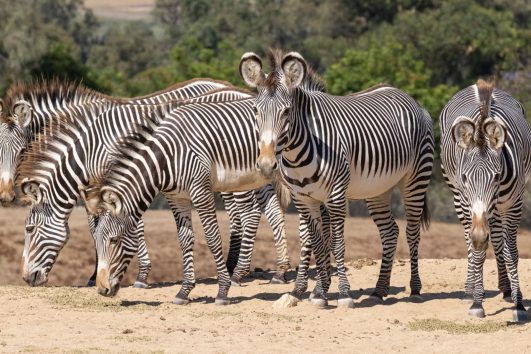
Tour Reviews
There are no reviews yet.
Leave a Review